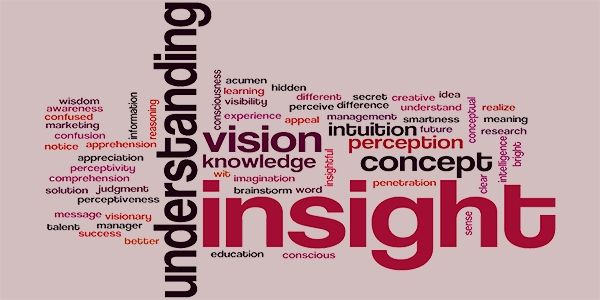Strategy Spotlight: 6 Ways Analysis Produces Strategic Insights for Business Success
This is one of the topics I have struggled with over the years.
Not because I don’t feel I understand it but because I meet professionals in the business analysis and project management fields who say, I don’t create the strategy or provide insight; it is given to me. What a load of bull. The reality is you create strategy and insight just by the nature of what you do. Here are 6 Ways Analysis Produces Strategic Insights for Business Success.
1. Stop It!
Strategic thinking is an individual’s capacity for thinking conceptually, with imagination, systematically and opportunistically as it relates to the attainment of future success. There are many times through the application of business analysis, and project management approaches that you use your spidey senses to engage your ability to think strategically naturally. To think someone else is more strategic than you is nonsense. To quote one of my favorite lines from an old Bob Newhart Show on YouTube – Stop it! https://www.youtube.com/watch?v=Ow0lr63y4Mw
2. Past, Present and Future Insight
Every organization I have ever worked with needs the same three things no matter at what level you are working. Those things exist at the senior, middle, and operational level of every organization and are written clearly in the various industry’s body of knowledge. They are the present state, the future state, and insight into how to bridge the gap between the present and future. That is about it. You are doing problem-solving at its foundation. Chances are you do think about the present and ask yourself what the future should look like. Then somewhere your mind says, OK, what needs to happen to get there. Wow, a strategic insight that can provide value to the organization. You just applied the IIBA Body of Knowledge Chapter on Strategic Business Analysis.
3. The Brain Finds a Way
I completely believe the human brain will always find a way when a problem is presented to be solved. It sometimes comes across as a flash like a camera taking a picture you can post on social media. There is a whole neurological science around the brain that has suggested we need to balance thinking with detachment to create insight. I’d have to agree. I think when you are emotionally connected to a subject matter it is far more difficult to provide objective insight. So that is why when you are too connected to a topic you should hand it off to someone else or at least talk to someone who is less emotionally connected. It might help. From business analysis consider the standard approach prepare, define, capture, analyze, integrate, refine and present your insights. Create a feedback loop. It helps.
4. Know What Insight Looks Like
I guess you can say good insight in business has some common traits. I think there is some truth to that statement. I know you can create a list of what insight might look like and then see whether your thinking holds the test at the time. Consider whether your insight has an impact, are practical and relevant, are based on facts, data and other evidence, deliver a picture beyond the surface, and there is little room for interpretation and people can easily understand them.
5. Personality Traits Matter
I was once asked by a CEO whether some personality types are more strategic than others. I said “Yes” and went on to explain I believe some people are more “What and Why” and others are more “How To” or tactical. That does not mean the latter does not have strategic insights. If everyone on your team were strategic all the time, nothing would get done. So it requires a balance of people with the right combinations of traits and personality to work together to have impact and team with success. There is another part of this puzzle. The ability to apply their expertise, have a purpose, be analytical, use intuition where needed, be willing to experiment, listen and drill deeper when needed. I do think it is also important to not think you should always have the answer. The answer should come through discovery.
6. Gain Insight into Purpose
Strategy insight is done to achieve a purpose. No clear purpose, poor insight. It is that simple. It becomes the “Fish on Land” syndrome. Sad but true. So this means you must have a focus or provide a focal point. I think this is where good leadership and definition of a problem comes in. Are you looking to implement a new system, expand your market, save on the bottom-line? There is a lot of literature providing approaches to help you gain strategic insight and develop a clear purpose for the organization, for a team and even for an entity of one, an individual. The greater the understanding of purpose, the better the strategic insight, solution, and implementation.
Final Thoughts
This is one of those topics that puts the hair on the back of my neck up a bit. I see so much potential business brainpower not being tapped in organizations. Even this morning I was reviewing career posts for an organization curious as to what people were saying. The pros were salary and benefits, and the con is that it was a death sentence of the brain. All I could think is that if you are looking for the strategic insight, it was not going to come from within this organization. If strategic insight were presented, nothing would move forward. People need to be strategically engaged in their thinking it is how we solve problems. Insight happens at all levels, not just at the top. As a professional know the ways you provide strategic insights.
Remember: Do your best, invest in the success of others, and make your journey count.




